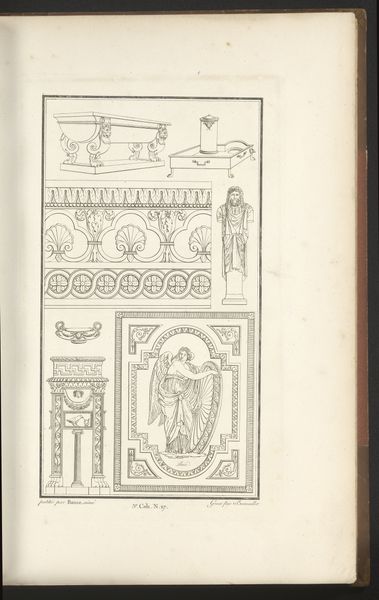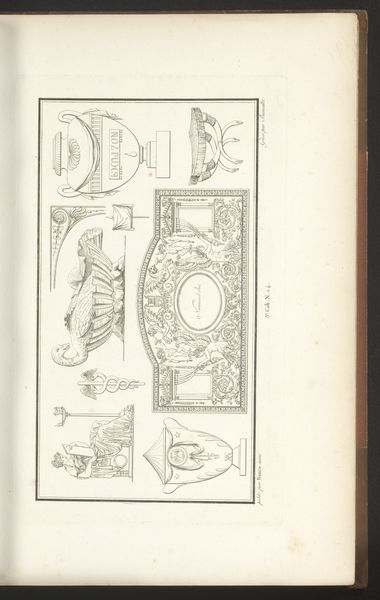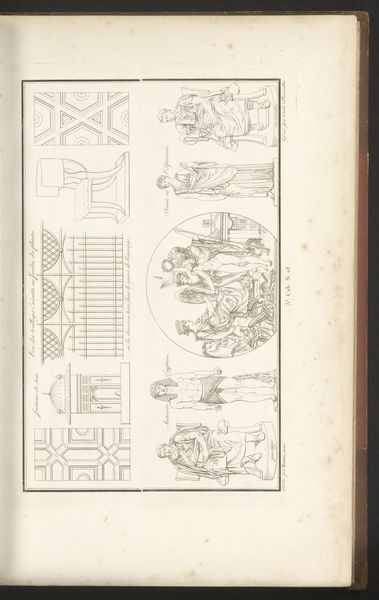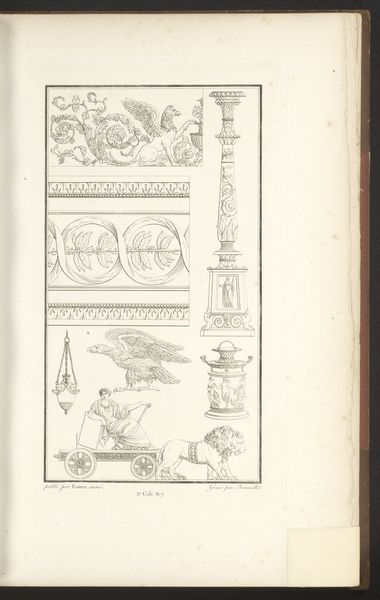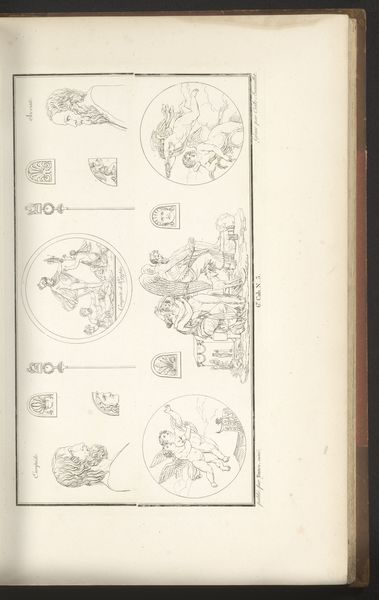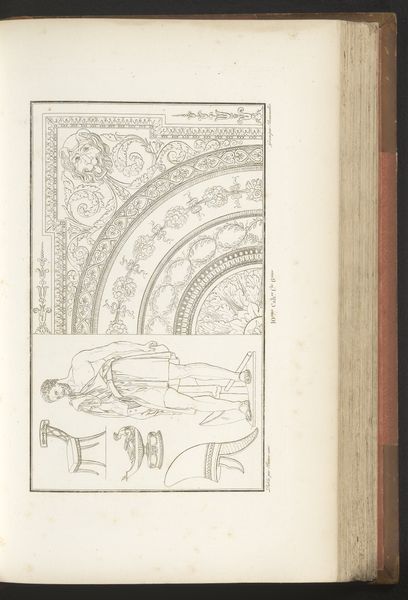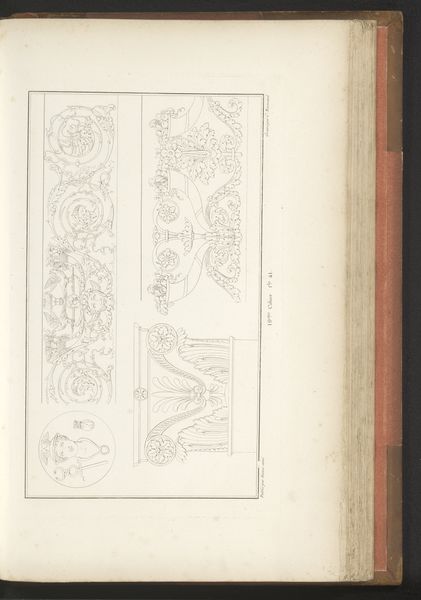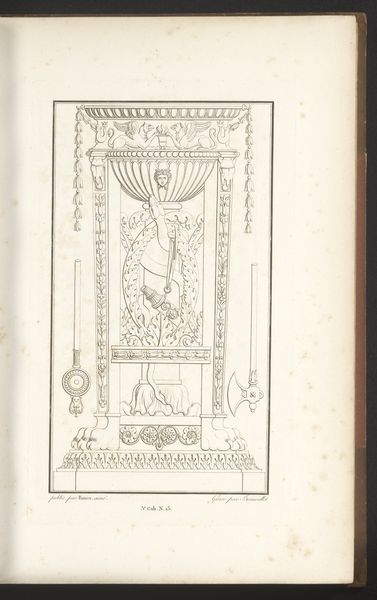
drawing, paper, ink, engraving
#
drawing
#
neoclacissism
#
pen illustration
#
figuration
#
paper
#
ink
#
geometric
#
engraving
Dimensions: height mm, width mm
Copyright: Rijks Museum: Open Domain
Curator: Welcome. We're looking at a drawing titled "Diverse ornamenten" from 1820 by Cécile Beauvallet. It showcases various neoclassical decorative elements. My immediate response is to its cool, almost clinical elegance. Editor: Clinical, perhaps, but also intensely human. Look at the drawing’s production – likely a painstaking process. Engravings of this detail served a purpose; consider the craftspeople, artisans, and workshops where these designs might find practical application. This wasn't simply an aesthetic exercise. Curator: Indeed. Observe the composition. Beauvallet has arranged these design motifs with precision. Each object—the lions, the furniture, the geometric details—is delineated with incredible clarity. This precise rendering suggests an idealized form, characteristic of Neoclassicism and its aspiration towards perfection. Editor: And consider the cost of achieving this level of "perfection". Paper, ink, the engraver's skill – these materials and labor have inherent value. Objects like these weren't merely conceived in the mind, they existed because people invested resources into their creation. And who ultimately consumes them? Wealthy patrons emulating classical ideals. Curator: A keen point. The geometric patterns speak volumes. They aren't merely decorative; they reference a specific vocabulary of forms. Notice how the symmetrical arrangement establishes a sense of balance and order, mirroring the philosophical tenets of the period. The stylistic lineage can be directly traced to ancient sources. Editor: What I find compelling are the latent applications, how each engraved component has a life, influencing furniture design. I see in those symmetrical forms the possibility of mass production in a way; consider this artwork a tool to be copied, reproduced, and disseminated into culture, making Beauvallet less an artist and more a contributor in service of furnishing trends. Curator: That's a striking interpretation, reframing Beauvallet’s creative agency. However, regardless of final execution, the arrangement showcases a careful curation of cultural referents meant to provoke intellect and refine our conception of beauty. Editor: True, and by acknowledging their value beyond simple aesthetics, we get closer to a grounded understanding of this object in the social reality from which it originated. Curator: Precisely. It offers us so many ways to think about aesthetic principles of the era. Editor: Yes, and also to contemplate artistic creation itself.
Comments
No comments
Be the first to comment and join the conversation on the ultimate creative platform.

